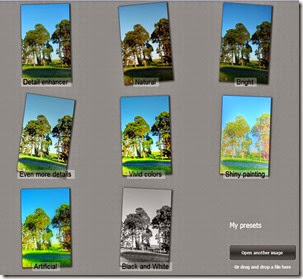
 opularity brings copycats and there are now a lot of HDR style presets, filters, “Dragan Effect” methods and straight out HDR Fakes. These normally split the image into a series of layers that generate re-blends to emphasis contrast, detail and possible saturate some of the colours. Like the true multi-image HDR they can de used to excess and produce scary lurid photos but they can also produce strong results when used with care. I quite like the results that can be produced with the OnOne Perfect Effects HDR look filter, particularly when used in conjunction with Dynamic Contrast and/or Tone Enhancer filters on underlying layers.
opularity brings copycats and there are now a lot of HDR style presets, filters, “Dragan Effect” methods and straight out HDR Fakes. These normally split the image into a series of layers that generate re-blends to emphasis contrast, detail and possible saturate some of the colours. Like the true multi-image HDR they can de used to excess and produce scary lurid photos but they can also produce strong results when used with care. I quite like the results that can be produced with the OnOne Perfect Effects HDR look filter, particularly when used in conjunction with Dynamic Contrast and/or Tone Enhancer filters on underlying layers.
There are also several methods to bring the tone mapping approaches into processing a single RAW image. The Digitial Photography School gives a nice tutorial on creating a fauxHDR look using a set of simple tone stretching methods in lightroom presets. I have a very similar preset I’ve called SDR+ but I don’t include exposure, white balance or noise reduction., and in DPS’s example. I prefer to fix white balance first (as tone stretch can introduce significant colour casts). I only adjust exposure and noise after the preset is applied if necessary, and I’m a fraction heavier on the clarity slider.
One simple application to uses this approach is hdRaw, which can take a single RAW image and stretch the tones in a number of common tone mapping like ways, Rather than calling this true HDR I have seen it called SDR+ (Standard Dynamaic Range Plus) but it can achieve much the same effect as a multi-image HDR image tone mapped in the same way. You can even create your own presets, so I have made a basic Reinhard to suit my atheistic.
There are quiet a few techniques around that suggest you create a pseudo under exposed and over exposed image from your single raw file and then use these to generate a conventional HDR but to be honest this is a lot of work and you still start with the same dynamic range of intensity anyway. I think you are better experimenting with some of the approaches above when you only have a single RAW photo.
![]() At the same time I was writing this post by +Iain Harley, from The Patch community on google+ gave a heads up in this link on The Changing Face of HDR Photography which does nicely summarize that HDR is developing and its really all about reproducing the beauty you see and feel when your take the photograph.
At the same time I was writing this post by +Iain Harley, from The Patch community on google+ gave a heads up in this link on The Changing Face of HDR Photography which does nicely summarize that HDR is developing and its really all about reproducing the beauty you see and feel when your take the photograph.




No comments:
Post a Comment